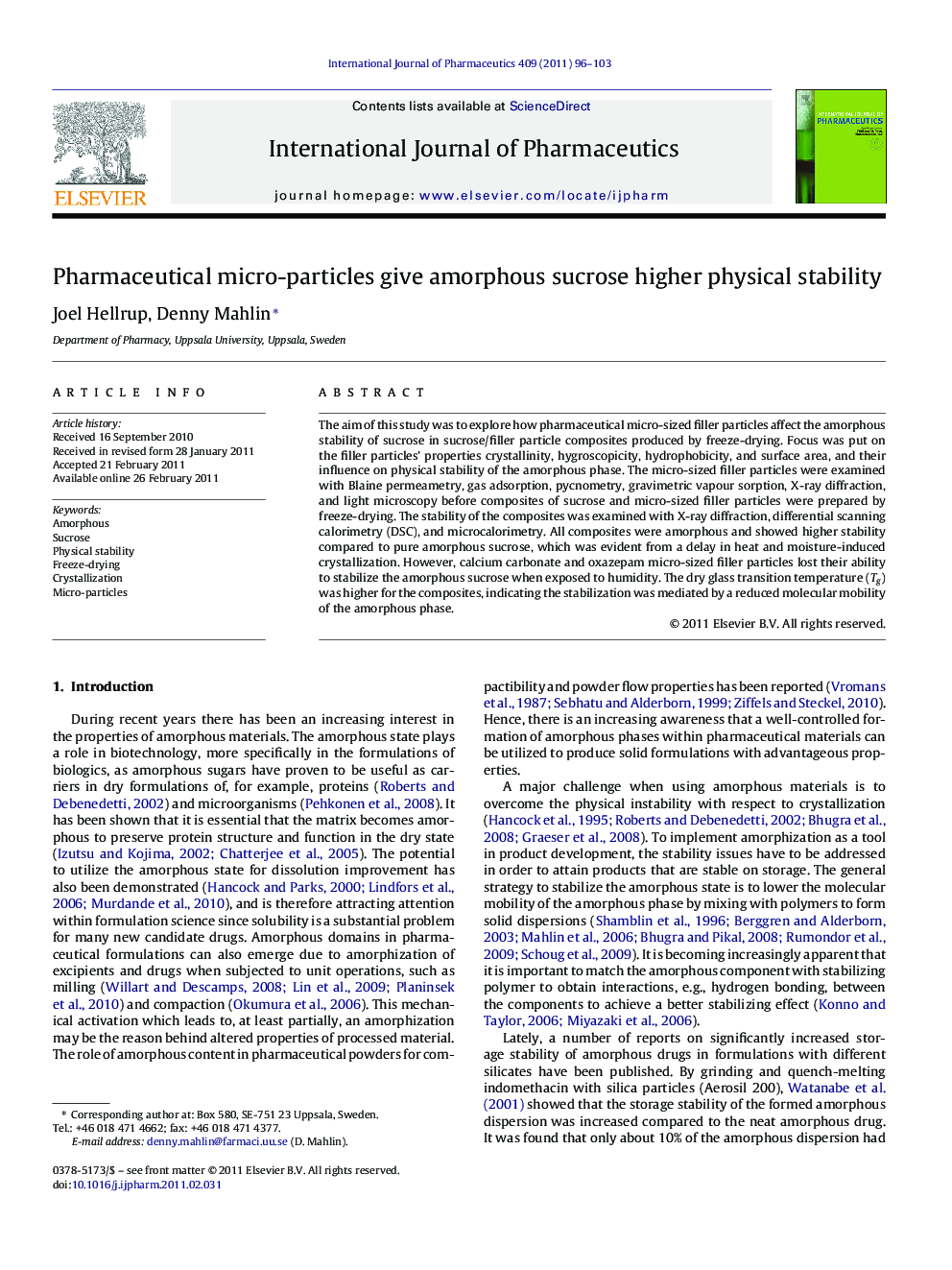| Article ID | Journal | Published Year | Pages | File Type |
|---|---|---|---|---|
| 2503598 | International Journal of Pharmaceutics | 2011 | 8 Pages |
The aim of this study was to explore how pharmaceutical micro-sized filler particles affect the amorphous stability of sucrose in sucrose/filler particle composites produced by freeze-drying. Focus was put on the filler particles’ properties crystallinity, hygroscopicity, hydrophobicity, and surface area, and their influence on physical stability of the amorphous phase. The micro-sized filler particles were examined with Blaine permeametry, gas adsorption, pycnometry, gravimetric vapour sorption, X-ray diffraction, and light microscopy before composites of sucrose and micro-sized filler particles were prepared by freeze-drying. The stability of the composites was examined with X-ray diffraction, differential scanning calorimetry (DSC), and microcalorimetry. All composites were amorphous and showed higher stability compared to pure amorphous sucrose, which was evident from a delay in heat and moisture-induced crystallization. However, calcium carbonate and oxazepam micro-sized filler particles lost their ability to stabilize the amorphous sucrose when exposed to humidity. The dry glass transition temperature (Tg) was higher for the composites, indicating the stabilization was mediated by a reduced molecular mobility of the amorphous phase.
Graphical abstractFreeze-dried composites of sucrose and micro-sized filler particles show higher physical stability than neat freeze-dried sucrose.Figure optionsDownload full-size imageDownload as PowerPoint slide
